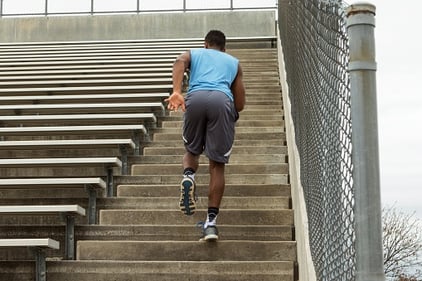 Summertime is in full swing, and whether you are a competitive or recreational athlete, changes are definitely happening to your normal schedule. For high school and collegiate athletes, more time is spent at home and for general fitness enthusiasts, more options are available to you to fulfill your exercise quota (in other words, doing more things outside). These are both extremely important changes that can be used to alter a routine that has lasted for the past 8 or 9 months of your life.
Summertime is in full swing, and whether you are a competitive or recreational athlete, changes are definitely happening to your normal schedule. For high school and collegiate athletes, more time is spent at home and for general fitness enthusiasts, more options are available to you to fulfill your exercise quota (in other words, doing more things outside). These are both extremely important changes that can be used to alter a routine that has lasted for the past 8 or 9 months of your life.
Student-athletes have been juggling class, competition, and training. Amateur athletes have been working (real jobs), training, and competing as well. When early spring hits, most individuals are sick of that stagnant routine and are looking to switch it up, which is why summer is welcomed by most with open arms.
Summer can also be a time when many physical aspects (such as power, strength, and speed) can decline if adequate “maintenance” of those aspects is not applied. The increase in other opportunities during summer can sometimes lead to a leniency of training that might do more harm than good.
Here are 3 things that I have learned over recent years as a strength coach, trainer, and collegiate athlete to hopefully help minimize this detraining effect.
1. Don’t focus on too much at one time.
Every summer when I would go home from school, I had a list of 5 or 6 things that I felt like I had to get better at. Each training session, I would have a ton of thoughts about how I could make those things better. Of course, I had a training packet from the football team, but felt like I had to do even more. I had to get faster, more agile, stronger, more flexible, and in better shape. At some point, I was doing more thinking about what I had to do to get better than just working hard with what I had.
Even today, I send workout packets home with each of my athletic teams. The goal, obviously, is to continue to improve their physical and mental toughness. But for some, I just want to make sure that they don’t totally fall off of the bus with all of their training. I aim to keep workouts short, sweet, but challenging. They usually focus on sport-specific training aspects for each individual team (for example, single-leg strength for runners, and rotational power for softball players). I want to make sure that the “bread and butter” of the sport remains at the forefront.
2. Get creative.
Being creative in the gym during the summer months may be due to two things:
- Your gym doesn’t have the equipment you want (or need) to do specific exercises, or
- You are looking for alternatives to exercises you already do.
If your gym doesn’t have specific pieces of equipment for exercises that you are looking to do, think about what that exercise is trying to accomplish. For instance, your workout program might call for a kettlebell swing, but your gym has no kettlebells. Think about what the target muscle is for that exercise and plan an alternative. The main muscles in the KB swing are the glutes, so doing a weighted hip bridge or a Romanian Deadlift might suffice as an alternative. Sure, it’s not a perfect match, but it’s better than not doing it at all!
If you are simply looking to get out of the monotony of your 4-day split routine, you have a ton of options. Say Tuesday is considered your “squat” day, but you want to take a break from the barbell work you have been doing. Good news: You can squat with just about anything in the gym. Kettlebells, sandbags, slosh pipes, medballs, and weighted vests are just a few options that can give you that much-needed break from your regular program. Also, try switching up the reps. If you are used to doing 5 sets of 5 reps, try a workout where you do 5 sets of 20 or 3 sets of 50. It will definitely give a little shock to your system.
3. Don’t forget what summer is for!
Every competitive athlete, young or old, constantly thinks about their sport and how they can improve their performance. For most, there is no such thing as an off season anymore. There is never a chance to truly take their mind off of what they compete in, which can lead to burnout after a couple of seasons. Summer is meant for unwinding from heavy workloads, in class or with jobs. Mental and emotional recovery are just as important as physical recovery. If your mind has not recovered from the past year of training and competing, it will be very hard to devote the same amount of time and effort to the next season.
You still need to train for your sport, but post-training activities are a good way to unwind after a hard workout. Go to the lake, go fishing, go golfing: do something that allows you to enjoy the summer. You will only have a few months of opportunities like this. Work hard, play hard!

This blog was written by Alex Soller, NIFS Athletic Performance Coach. To find out more about the NIFS bloggers click here.
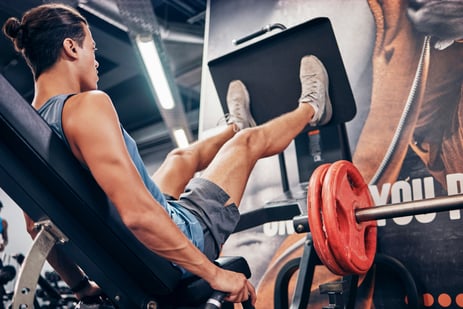 Conjugate training is a term coined and expanded upon by the late, great Louie Simmons, a well-known strength coach at Westside Barbell. Conjugate means to bring together, so conjugate training is literally joining together different training styles into one micro or meso training cycle. Conjugate training is bringing together training styles such as power, strength, agility, and hypertrophy into one training cycle.
Conjugate training is a term coined and expanded upon by the late, great Louie Simmons, a well-known strength coach at Westside Barbell. Conjugate means to bring together, so conjugate training is literally joining together different training styles into one micro or meso training cycle. Conjugate training is bringing together training styles such as power, strength, agility, and hypertrophy into one training cycle. 

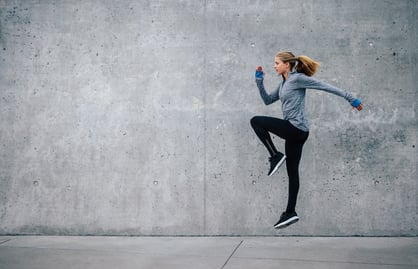 The “perfect” workout rarely happens. Every so often, you may have one of those training sessions where every block flows smoothly and programmed repetitions and sets are executed flawlessly. But for most days, there will be missed reps, you may feel more fatigued than you think you should, or the workout may not come together as you hoped it would. That is fine. Your goal should be to strive to be as close to perfect as possible, with the understanding that it may not always happen.
The “perfect” workout rarely happens. Every so often, you may have one of those training sessions where every block flows smoothly and programmed repetitions and sets are executed flawlessly. But for most days, there will be missed reps, you may feel more fatigued than you think you should, or the workout may not come together as you hoped it would. That is fine. Your goal should be to strive to be as close to perfect as possible, with the understanding that it may not always happen.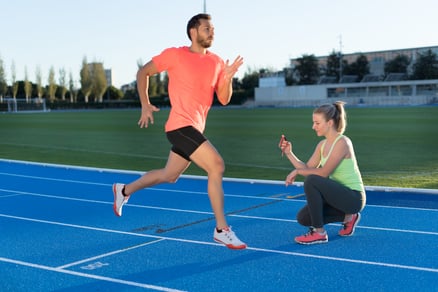 In a world where people want results in an instant and take drastic measures to achieve those results as fast as possible, developing strength, power and athleticism in a long-term aspect is often overlooked. For any fitness-related result or outcome, improvements take time. Fat loss, overall strength and/or power in any particular lift, speed, and agility are all seeds that needed to be watered for a while before noticeable and permanent changes are evident.
In a world where people want results in an instant and take drastic measures to achieve those results as fast as possible, developing strength, power and athleticism in a long-term aspect is often overlooked. For any fitness-related result or outcome, improvements take time. Fat loss, overall strength and/or power in any particular lift, speed, and agility are all seeds that needed to be watered for a while before noticeable and permanent changes are evident.
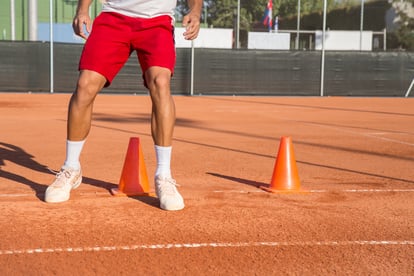 Agility drills basically represent an obstacle. Athletes who can respond faster to starts, stops, and change of direction earlier than the obstacle will have a practical advantage on the playing field. This blog highlights three of my favorite agility drills that can be built into your team’s conditioning routines. The benefits of these runs, jumps, and cuts include increases in reactionary speed, coordination, footwork, and body awareness. Athletes need to be able to change direction rapidly under control without decreases in speed.
Agility drills basically represent an obstacle. Athletes who can respond faster to starts, stops, and change of direction earlier than the obstacle will have a practical advantage on the playing field. This blog highlights three of my favorite agility drills that can be built into your team’s conditioning routines. The benefits of these runs, jumps, and cuts include increases in reactionary speed, coordination, footwork, and body awareness. Athletes need to be able to change direction rapidly under control without decreases in speed.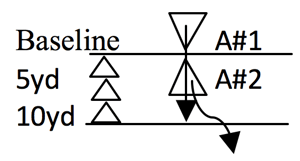 Drill 1: Offense/Defense—Partner Reaction Acceleration Tag
Drill 1: Offense/Defense—Partner Reaction Acceleration Tag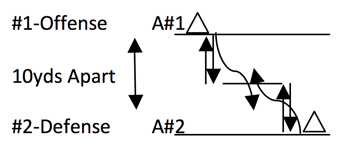 Drill 2: Cat & Mouse—5-5 Shuttle Reaction Tag
Drill 2: Cat & Mouse—5-5 Shuttle Reaction Tag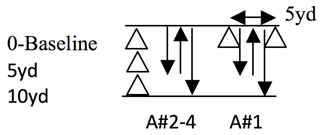 Drill 3: Shuttle Runs—Reaction 5-5-10 Shuttle
Drill 3: Shuttle Runs—Reaction 5-5-10 Shuttle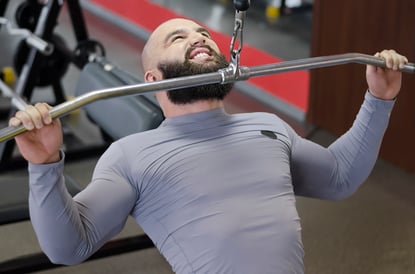 Have you ever tried working out in a time crunch or just wanted to get more exercise in a shorter period of time? Maybe you would like to speed through, but would rather have a plan of action to make your path a little easier. You are in luck because there is a fitness concept that does all of this while making sure you get a great workout. The idea is called supersetting, but it’s not as simple as you might think. To develop a great superset workout, you need to understand how a few concepts really work.
Have you ever tried working out in a time crunch or just wanted to get more exercise in a shorter period of time? Maybe you would like to speed through, but would rather have a plan of action to make your path a little easier. You are in luck because there is a fitness concept that does all of this while making sure you get a great workout. The idea is called supersetting, but it’s not as simple as you might think. To develop a great superset workout, you need to understand how a few concepts really work. Summertime is in full swing, and whether you are a competitive or recreational athlete, changes are definitely happening to your normal schedule. For high school and collegiate athletes, more time is spent at home and for general fitness enthusiasts, more options are available to you to fulfill your exercise quota (in other words,
Summertime is in full swing, and whether you are a competitive or recreational athlete, changes are definitely happening to your normal schedule. For high school and collegiate athletes, more time is spent at home and for general fitness enthusiasts, more options are available to you to fulfill your exercise quota (in other words, 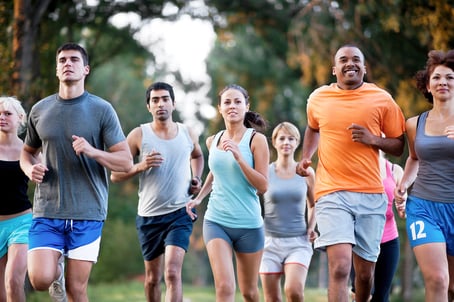 For years people have been running in marathons and half marathons, 10Ks and 5Ks. And most recently the wide world of racing has taken a turn for themed runs, which is quite exciting if you have ever been to one! But no matter how many years go by, two goals continue to come up: running farther, and running faster.
For years people have been running in marathons and half marathons, 10Ks and 5Ks. And most recently the wide world of racing has taken a turn for themed runs, which is quite exciting if you have ever been to one! But no matter how many years go by, two goals continue to come up: running farther, and running faster.